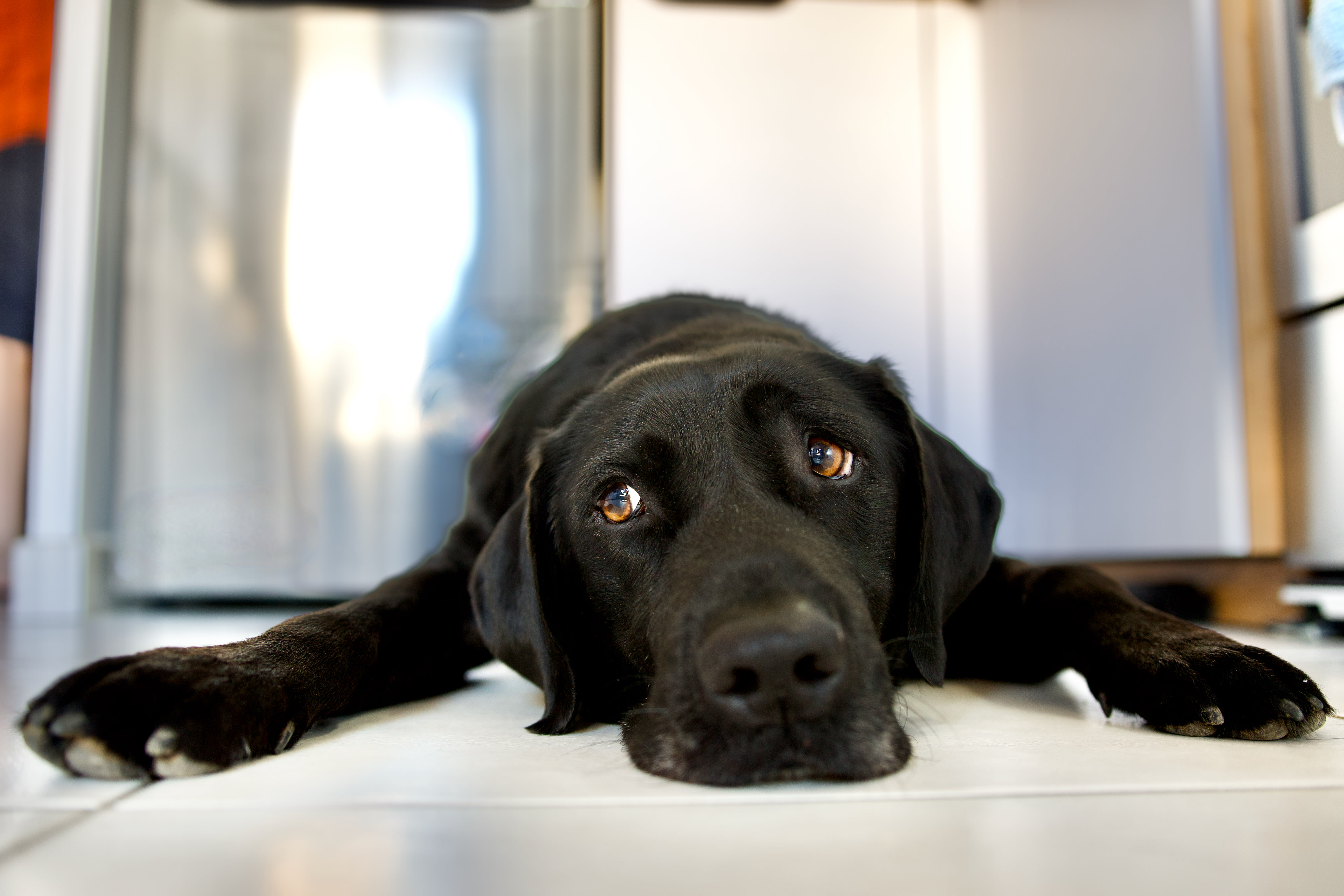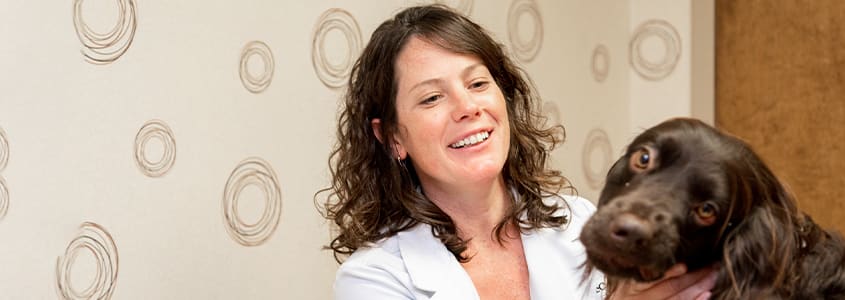If your dog is suffering from a torn cranial cruciate ligament, knee surgery will likely be the most effective way to get your pooch up and running again. But which type of knee surgery is best for your dog? Our Greensboro vets discuss the options.
Cranial Cruciate Ligament Injuries
Healthy, pain-free knees are essential for your dog to live an active lifestyle. While there are a number of high-quality dog foods and supplements that your vet can recommend to help keep your dog's joints in good condition, cruciate injuries (or ACL injuries as they are sometimes called) can occur and cause your dog a great deal of discomfort.
Your Dog's Cranial Cruciate Ligament
The dog's cranial cruciate ligament (also called the CCL, CrCL, ACL or cruciate) is one of two ligaments in the leg that connect the shin bone to the thigh bone and allows for proper (pain-free) knee function.
Knee pain stemming from a torn cruciate can come on suddenly during exercise but is equally likely to gradually develop over time. If your dog has injured their cruciate ligament and continues to run, jump and play then the injury may quickly become much more severe.
Causes of Dog Knee Pain
If your dog has a torn cruciate, pain results from the knee's instability and a motion called 'tibial thrust'.
Tibial thrust is a sliding motion caused by the transmission of weight up the dog's shin bone (tibia) and across the knee, causing the shinbone to “thrust” forward in relation to the dog's thigh bone (femur). The forward thrust movement occurs because the top of the tibia is sloped, and the dog's injured cruciate cannot prevent the unwanted movement from occurring.
Signs That Your Dog May Have an Injured Cruciate
If your dog is suffering from an injured cruciate and experiencing knee pain, they will not be able to run or walk normally and will likely display other symptoms such as:
- Difficulties rising up off of the floor (particularly after rest, following exercise)
- Pronounced limping in their hind legs
- Stiffness following exercise
Knee Surgery to Treat Cruciate Injuries in Dogs
Cruciate injuries will not typically heal unless treated. If your dog is showing signs of a torn cruciate it's important to make an appointment to see your vet and have the condition diagnosed, so that treatment can begin before symptoms become more severe. Often dogs with a single torn cruciate will quickly go on to injure the second knee.
If your dog is diagnosed with a torn cruciate your vet is likely to recommend one of three knee surgeries to help your pup regain normal mobility.
Extracapsular Lateral Suture Stabilization (ELSS / ECLS)
Extracapsular Lateral Suture Stabilization is often used to treat dogs that weigh less than 50 pounds and works by preventing tibial thrust with the help of a surgically placed suture. The suture stabilizes the dog's knee by pulling the joint tight and preventing the front-to-back sliding of the tibia. This allows the cruciate time to heal, and the muscles surrounding the knee an opportunity to regain their strength. ELSS surgery is a relatively quick and uncomplicated procedure with a good success rate in small to medium-sized dogs.
Tibial Plateau Leveling Osteotomy (TPLO)
TPLO is a reliable treatment for a torn cruciate and aims to reduce tibial thrust without relying on the dog's cruciate. This treatment involves making a complete cut through the top of the tibia (tibial plateau), then rotating the tibial plateau in order to change its angle. Finally, a metal plate is added to stabilize the cut bone as it heals. Your dog's leg will gradually heal and strengthen over the course of several months following TPLO surgery.
Tibial Tuberosity Advancement (TTA)
TTA is similar to TPLO and involves surgically separating the front part of the tibia from the rest of the bone, then adding a spacer between the two sections to move the front section up and forward. This surgery prevents much of the tibia thrust movement from occurring. As with TPLO surgery, a bone plate will be attached in order to hold the front section of the tibia in its correct position until the bone has had sufficient time to heal. Dogs with a steep tibial plateau (angle of the top section of the tibia) tend to be excellent candidates for TTA surgery.
Choosing The Right Knee Surgery For Your Dog
After a thorough examination of your dog's knee movement and geometry, your vet will consider your dog's age, weight, size and lifestyle, then recommend the treatment that's best in your dog's case.
Dogs' Recovery from Knee Surgery
Healing completely from knee surgery is a long process regardless of which surgery your dog has. Although dogs are often able to walk 24 hours after surgery, do not expect your dog to recover fully and a return to normal activities for at least 12 - 16 weeks. To help get your dog back to their normal day to day lifestyle as quickly as possible, follow your vet's post-operative instructions carefully. Allowing your dog to begin running and jumping before the knee has completely healed could lead to a serious re-injury and bring your dog back to square one.
Note: The advice provided in this post is intended for informational purposes and does not constitute medical advice regarding pets. For an accurate diagnosis of your pet's condition, please make an appointment with your vet.
Do you think that your dog might have a torn cruciate? Contact us today to book an examination for your pup and to learn more about surgery at Guilford-Jamestown Veterinary Hospital.
Looking for a vet in Greensboro?
We're always accepting new patients, so contact our veterinary hospital today to book your pet's first appointment.
Related Articles View All
What happens during a routine pet exam?
Routine wellness exams are a proactive way to help safeguard your pet's long-term health and vitality. Why should you take your healthy pet to the vet? What happens during a pet health wellness exam? Find out.
How much does an emergency vet visit cost?
Emergency veterinary care can be costly, but planning ahead allows you to make decisions about your pet's care based on their needs rather than financial restrictions. Today, we look at the cost of emergency vet care, and how to be ready if your pet needs emergency treatment.
Kidney Failure in Dogs
Chronic and acute kidney failure are serious health problems commonly seen in dogs. Here, you will learn about the differences between chronic and acute kidney failure in dogs, the signs to watch for and how these conditions are treated.
Signs of Bladder Infections in Dogs & How They Are Treated
Many dogs suffer from bladder infections and other issues affecting the urinary tract system. What causes bladder infection in dogs? What signs should you watch for? How do vets treat bladder infections in dogs? Read on to find out.


